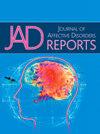Predictors of a PTSD diagnosis following the Beirut port explosion: Comparing the direct and indirect effects of exposure to trauma
Q3 Psychology
引用次数: 0
Abstract
Objective
The Beirut Port explosion on August 4, 2020, led to widespread devastation and significant psychological impacts, including the development of psychological disorders like PTSD. This study investigates the predictors of PTSD following this event, focusing on the differences between direct and indirect exposure to trauma
Methods
The sample consisted of 743 Lebanese participants. The DSM-5 revised criteria for indirect exposure, including secondary traumatic stress, are considered. Measures included the PCL-5, DASS-21, RFQ-8, and CD-RISC-10.
Results
The study confirms that both direct and indirect exposures contribute to PTSD development, with direct exposure linked to more severe PTSD symptoms. It also highlights the importance of demographic factors like gender and age in PTSD prevalence, with women and younger individuals more susceptible to PTSD in indirect exposure scenarios.
Conclusions
Protective factors like mentalizing and resilience are discussed, revealing their complex relationship with trauma exposure. Our findings have significant implications for developing targeted prevention and intervention strategies for different trauma exposure types and subpopulations.
贝鲁特港口爆炸后PTSD诊断的预测因素:比较创伤暴露的直接和间接影响
2020年8月4日,贝鲁特港发生爆炸,造成大范围破坏和重大心理影响,包括PTSD等心理障碍的发展。本研究调查了创伤后应激障碍的预测因素,重点是直接和间接暴露于创伤的差异。DSM-5修订的间接暴露标准,包括继发性创伤应激,被考虑。测量包括PCL-5、DASS-21、RFQ-8和CD-RISC-10。结果研究证实,直接和间接暴露都有助于PTSD的发展,直接暴露与更严重的PTSD症状有关。它还强调了性别和年龄等人口因素在PTSD患病率中的重要性,女性和年轻人在间接暴露的情况下更容易患PTSD。结论探讨了心理化和心理弹性等保护因素,揭示了它们与创伤暴露的复杂关系。我们的研究结果对制定针对不同创伤暴露类型和亚人群的针对性预防和干预策略具有重要意义。
本文章由计算机程序翻译,如有差异,请以英文原文为准。
求助全文
约1分钟内获得全文
求助全文
来源期刊

Journal of Affective Disorders Reports
Psychology-Clinical Psychology
CiteScore
3.80
自引率
0.00%
发文量
137
审稿时长
134 days
 求助内容:
求助内容: 应助结果提醒方式:
应助结果提醒方式:


